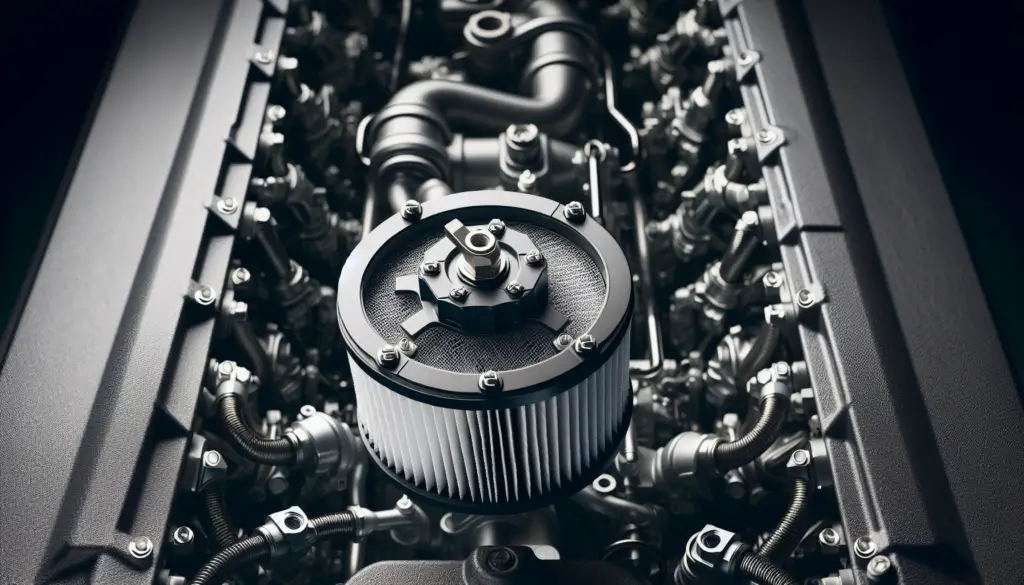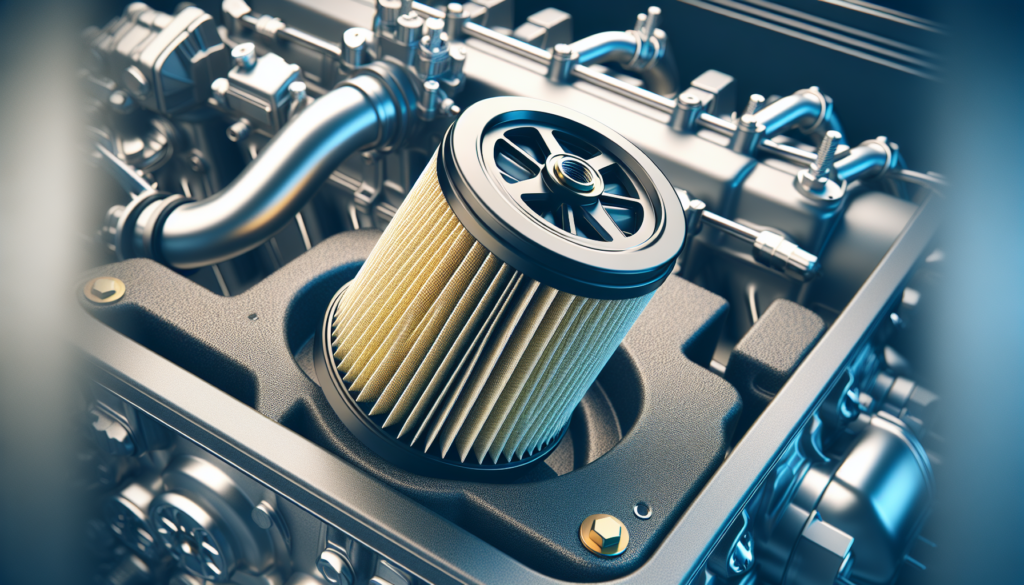Navigating the world of boating repairs can be tricky, but fear not – this guide takes you by the hand and walks you through the finer details of boat engine maintenance. Specifically, you’re going to learn the ins and outs of replacing your boat’s engine filters, a critical task that keeps your machine running smoothly. From recognizing when it’s time for a change to choosing the right filter and finally, the replacement process itself, we’ve got every base covered. So, sit back, relax, and get informed on the nitty-gritty of keeping your boat’s engines in top shape.

Understanding the Importance of Boat Engine Filters
Boating is a great way to explore the open waters, whether for leisure or fishing. However, to ensure a smooth and uninterrupted journey, it’s vital to understand the essence of boat engine maintenance. A significant aspect of this maintenance revolves around boat engine filters.
Role of Engine Filters in Boat Engines
Just like the human body needs to filter out toxins for health and longevity, boat engines rely heavily on different types of filters. Engine filters are critical for capturing unwanted particles or contaminants that could harm your boat’s engine. These particles can impede the engine’s performance and cause severe damage if not removed timely. The three main types of boat engine filters are fuel, oil, and air filters, each playing a distinct role in securing your boat’s optimal performance.
Signs of a Clogged or Faulty Boat Engine Filter
To maintain the engine’s health, you need to identify any red flags that suggest a clogged or faulty filter. These signs may include reduced engine performance, higher fuel consumption, unusual engine noises, and difficulty starting the engine. If you notice any of these symptoms, it’s time to examine your boat’s engine filters.
Understanding the Impacts of Not Replacing Filters on Time
Failing to replace boat engine filters on time can lead to dire consequences. A contaminated or worn-out filter can’t perform its role efficiently, leading to a host of issues such as lower fuel economy, reduced engine power, and even potential engine failure. Regular filter replacement is a small investment in exchange for a healthier, longer-lasting boat engine.
Types of Boat Engine Filters
Boat engine filters can be categorized into three main types: fuel filters, oil filters, and air filters. Each one has its specific function and role in keeping your engine running smoothly.
Fuel Filters
Fuel filters are crucial as they ensure only clean fuel reaches your boat’s engine. They remove any impurities or debris that could potentially damage the engine or reduce its efficiency.
Oil Filters
Just as fuel filters clean your fuel, oil filters are there to clean your engine’s oil. They catch any debris or particles that might be circulating in the engine oil, protecting the engine from wear and tear, and ensuring longevity.
Air Filters
An air filter’s task is to purify the air that goes into your boat’s engine for combustion. A clean air filter guarantees cleaner air, which in turn results in better fuel combustion and overall improved engine performance.
Understanding the Role of Each Type of Filter
Every engine filter plays a unique role in securing your boat engine’s efficiency and lifespan. Fuel filters prevent harmful contaminants from reaching the engine, oil filters keep the engine lubrication system debris-free, and air filters ensure optimal combustion by providing clean air. Regular maintenance of each is necessary to keep your boat running at its best.
Tools and Materials Needed for Replacing Boat Engine Filters
Before getting started with the task of replacing boat engine filters, make sure you have all the necessary tools and materials ready.
Detailed List of Required Tools
The list of essential tools for this task includes a filter wrench for removing the old filters, a socket set, and a screwdriver. You’ll also need a drain pan for collecting oil or fuel when you’re removing the filter, rags for cleanup, and possibly engine oil or fuel to top up after installing new filters.
Locating Reputable Suppliers for Boat Engine Filter Replacements
To ensure maximum performance and longevity for your boat’s engine, always opt for high-quality filters from reputable suppliers. Good quality filters can withstand demanding conditions, and reputable suppliers can provide expert advice and reliable post-purchase services.
Safety Measures when Replacing Boat Engine Filters
Working on boat engines involves some risks, so it’s essential to take certain safety measures to avoid accidents or injuries.
Importance of Safety when Working on Boat Engines
Safety should be your top priority when working on boat engines. From the moment you start gathering tools to the end of the filter replacement process, you must be aware of potential hazards and act responsibly to avoid them.
Personal Protective Equipment Required
Always wear personal protective equipment (PPE) while working on your boat’s engine. Essential PPE includes safety glasses to protect your eyes from possible splashes of fuel or oil, gloves to protect your hands, and a safety suit can help prevent oil or fuel stains on your clothes.
Environmental Safety Tips during the Replacements Process
When replacing engine filters, it’s crucial not only to protect yourself but also the environment. Dispose of the used parts and fluids properly following local regulations to avoid pollution. Also, work in a well-ventilated area to prevent inhalation of harmful fumes.

Locating the Boat Engine Filters
Before you can start replacing your boat’s engine filters, you’ve got to locate them first.
Steps in Locating the Oil Filter
The oil filter is usually placed near the boat engine. Depending on the type and model of your boat, its exact location can vary. You may need to refer to your boat’s manual for specifics. Generally, the oil filter looks like a small can, and it’s typically marked for easy identification.
Steps in Locating the Air Filter
The boat engine’s air filter is commonly found in the engine compartment. It’s usually housed within a cover or box that’s connected to the engine intake manifold with a large tube.
Steps in Locating the Fuel Filter
Most boats have two types of fuel filters – primary and secondary. They’re typically found along the fuel line, with the primary filter located close to the fuel tank and the secondary filter near the engine.
Steps to Replace Fuel Filters on a Boat Engine
Fuel filters are an integral part of boat engine maintenance. Learn to change them effectively with these steps.
Removal of the Old Fuel Filter
First, relieve the fuel system pressure to prevent fuel sprays when you detach the filter. After that, place a drain pan under the filter to catch any fuel. Using the right tools, carefully remove the old fuel filter.
Installation of the New Fuel Filter
Before installing the new filter, apply a small amount of clean engine oil to the gasket on top. This supports a better seal. Now you can fix the new filter into place, ensuring it’s tightly secured.
Tips for Proper Installation
When replacing fuel filters, always keep the fuel flow direction in mind. The filter should be installed in the same orientation as the old one for successful fuel flow. Also, check for leaks before running the engine.
Steps to Replace Oil Filters on a Boat Engine
Oil filters should be replaced routinely to ensure the boat engine is well-lubricated and free of particulate matter. Here are steps for doing so.
Procedure for Safe Removal of Old Oil Filter
Start by placing a drain pan under the filter to catch any dripping oil. Use a suitable wrench to loosen the filter until you can spin it by hand. Be careful, as it will be full of oil.
Guidelines for Installing New Oil Filter
Before installing the new oil filter, clean the mounting surface on the engine, and lightly oil the gasket on the top of the new filter. Now you can screw it onto the engine. Be careful not to over-tighten it – hand tight should be enough.
Useful Tips for Ensuring Correct Oil Filter Installation
One vital tip is to always fill a new oil filter with clean engine oil before installation. This prevents the engine from running dry during its initial periods after the oil change.
Steps to Replace Air Filters on a Boat Engine
Your engine’s health hugely depends on the air filter. Learn to replace it with the following steps.
Step-by-Step Process in Taking Out the Old Air Filter
The exact steps to remove the air filter can vary with boat models, but typically, you’ll have to open the air filter cover, remove the old filter, and clean the housing area with a damp cloth.
Instructions for Fitting the New Air Filter
Slip the new filter into the housing, ensuring it fits snuggly. Return the cover and secure it.
Practices to Ensure the Air Filter is Installed Correctly
Ensure that the housing cover is properly fixed back into place, and there are no air leaks. Also, dispose of the old, dirty filter properly.
Post Installation Checks
After replacing any filter, always perform post-installation inspections to ensure everything is in check.
Checking Connections on Newly Installed Filters
Make sure all caps, clamps, or bolts that were removed during the replacement are securely returned. Damaged or improperly tightened connections can cause leakage or performance issues.
Looking for Leaks or Installation Errors
Before firing up your boat’s engine, visually inspect each filter replacement area for any obvious signs of leaks or installation errors. You can start the engine and examine again for any leaks.
Ignition and Initial Operation Post Filter Replacement
Finally, switch on the boat’s engine and let it run awhile. If the engine operates smoothly and no leaks are spotted, great job! You’ve successfully completed the filter replacement.
Maintenance and Regular Checks for Boat Engine Filters
Now that you know how to replace your boat’s engine filters, it’s equally important to understand routine maintenance and frequent checks to keep them in excellent condition.
Routine Checks for Boat Engine Filters
Regular checks are essential for boat engine filters. These checks involve visual inspection for any noticeable damage, clogs, or dirt build-up, and monitoring engine performance for any drastic changes which could indicate a filter issue.
Recommended Maintenance Practices
For fuel and oil filters, a change every six months or after 100 hours of use, whichever comes first, is recommended. Whereas the air filter is recommended to be changed every season or after 25 hours of use. Always consult your boat’s manual or a professional for specific maintenance guidelines.
Signs When to Replace Each of the Filters
Every type of filter has specific cues for when it requires replacement. Reduced power, difficulty starting, higher fuel consumption, dark or dirty oil are all signs that indicate it’s time to replace one, or possibly all of your filters.
In conclusion, understanding the importance of boat engine filters and consequently maintaining them can significantly impact the boat’s performance and its engine’s lifespan. Although the task may seem complicated initially, with patience and practice, you can quickly master the art of replacing your boat engine filters. Happy boating!

